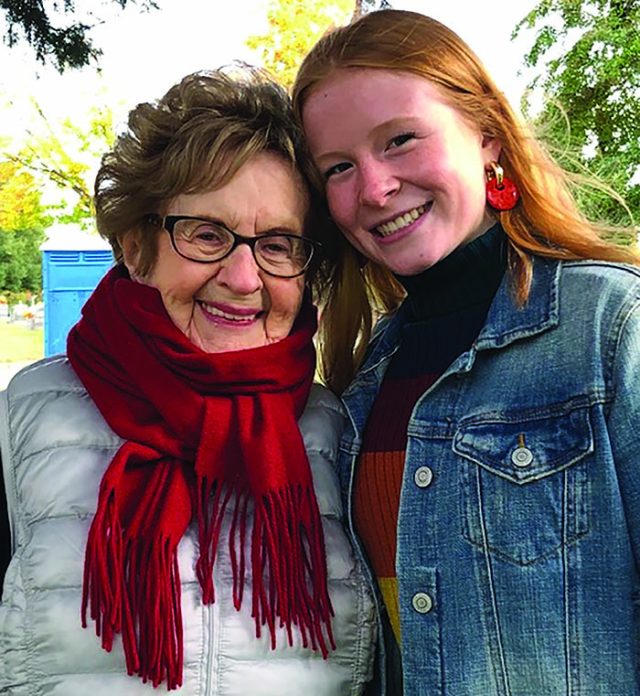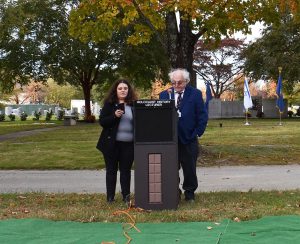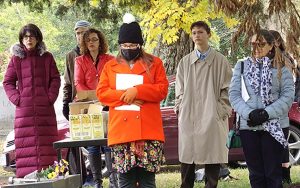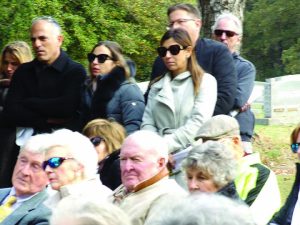
Editor’s Note: The following is the winning essay by Abby Crowe, a junior at Douglas Freeman High School. The essay also was recently published in the Richmond Times Dispatch. She received $500 as first prize for this award-winning essay. The contest is held annually.
By Abby Crowe
As a dark night in May 1944 unfolded, so did the reality of Alice Ginsburg and her family’s fate. Barking German Shepherds and yelling SS officials could be heard as they were swiftly rushed from cattle cars with thousands of others into Auschwitz concentration camp.

Only weeks before, Ginsburg had lived an orthodox Jewish life in Czechoslovakia with her mother, father, three sisters and brother. Now, she was moments away from a separation that would break up her family and unravel her world.
Alice Ginsburg recounted her emotional testimony to a group of students in hopes that her story will never be forgotten. I recognize how fortunate I am to have heard a first-person account as part of my journalism class at the School of the New York Times.
In recent months, antisemitism has once again been on the rise, and Ginsburg along with her fellow Holocaust survivors are pleading for more love and no hate.
Alice, 13 years old when Czechoslovakia was invaded, had already been forced to leave school because of antisemitism and had watched her father sent away to work for Hungarian war efforts.
However, she never saw the Nazi invasion coming. “I don’t know how much they [my parents] knew,” she told us. At this time, the only war news that Alice’s family heard were little snippets picked up at the synagogue. The Nazis forbade Jews from owning or listening to the radio, which made information hard to come by.
After being uprooted from their home, Alice and her family lived in a cramped ghetto with few belongings. This lasted only a few weeks before she and many others were forced on cattle cars with no clue of their destination.

“My father kept saying, ‘They are probably sending us to work and then we will come home,’” said Alice. Whether her father truly thought this or was being hopeful, Alice still doesn’t know. She strongly believes that her hope and unwillingness to give up is how she survived.
Unfortunately, when they arrived at Auschwitz, reality set in. “My father saw what was waiting for us and thought that we were all going to be killed, so he started to say a prayer,” said Alice Ginsburg. “A prayer that you say before you die”.
What was waiting for them was the horrific sight of flaming fire and thick smoke rising out of several crematoriums. With fear and shock, Alice and her family followed the masses of people to the scrutinizing Nazi officers who sorted the imprisoned into groups based on age and gender.
“We said our goodbyes and hugged and kissed and that was the last I saw them,” said Alice as she tearfully recalled leaving her mother, grandmothers, little sister, and close relatives. After being sent to barracks by Nazi soldiers, she would be forced to undress and attend roll call with other women and girls in the camp. This demeaning treatment worsened by the day since the sole purpose of the gathering was for the Nazis to decide who would be eliminated.
Despite being at Auschwitz, Langenbielau, other concentration camps, and the long, infamous death march, Ginsburg’s perseverance and fight to stay alive saved her. Hearing Alice describe awful monstrosities and then tell of her own hope throughout it all is a memory I will never forget.
Alice Ginsburg now lives in New York City, where she met her husband and had three children. Upon arriving in the States, Alice was focused on moving forward with her life and not concentrating on the trauma of her past.

In 1983, Yaffa Eliach (another survivor) reached out requesting an interview with Alice so she could have an opportunity to share her story. “I find it very important to educate people so it shouldn’t happen again,” said Alice. Even with numerous interviews behind her, each one is as difficult to get through emotionally as the first.
When my classmate from The School of the New York Times asked what advice she would give to young people today, Alice said, “Fight against hatred. For evil to flourish it takes good men to do nothing.” She longingly asked that the future generation work for justice and eliminate hate.
I hope by sharing Alice Ginsburg’s story that people of all ages will seek opportunities to hear firsthand accounts. New York’s Museum of Jewish Heritage: A Living Memorial to the Holocaust offers resources such as a recorded public program called, “Stories Survive”. In Richmond, we are fortunate enough to have the Virginia Holocaust Museum as well as the Violins of Hope exhibit until October 24, 2021.
“I am upset about the rise of antisemitism,” said Alice, “but I am very hopeful that we are overcoming it. It’s for you to fight hatred.”




